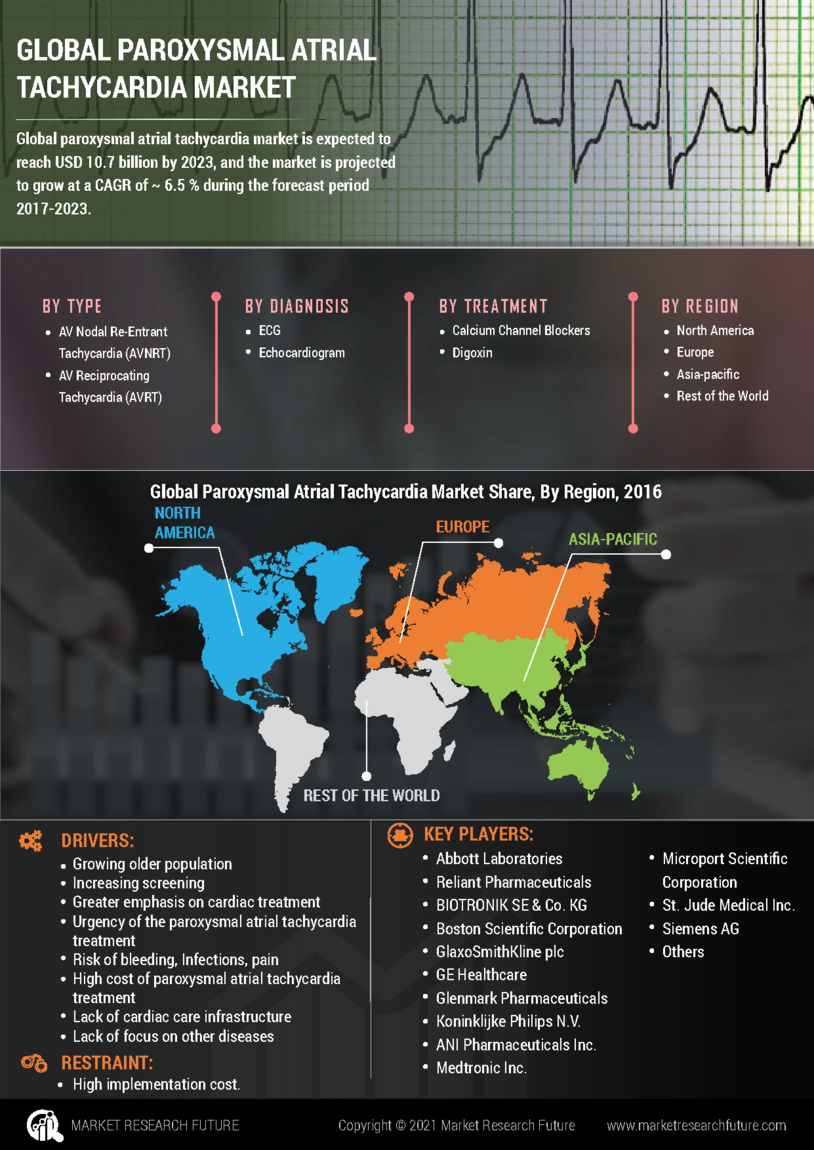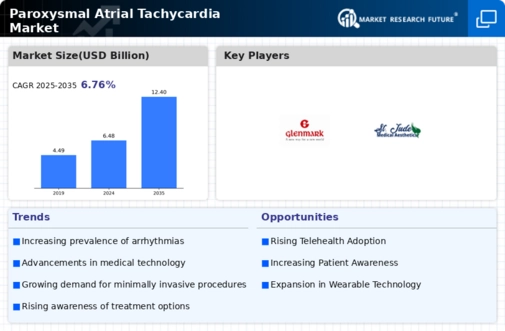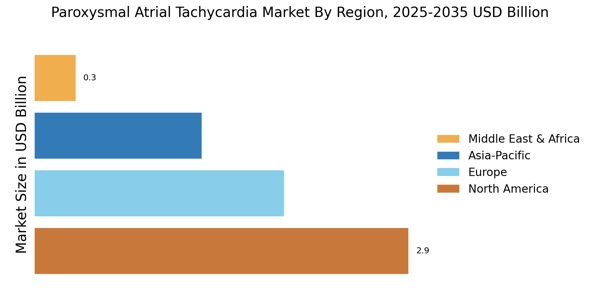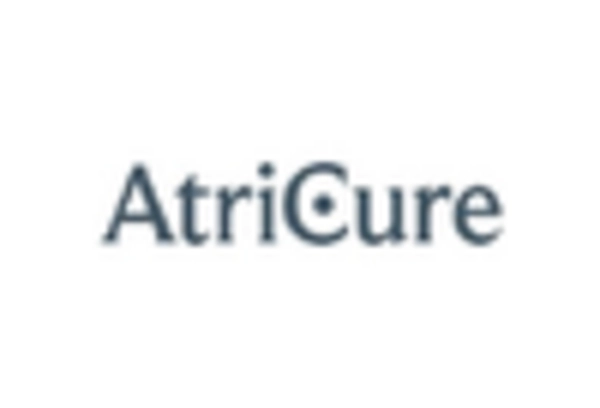Growing Geriatric Population
The aging population is a critical factor driving the Paroxysmal Atrial Tachycardia Market. As individuals age, the risk of developing cardiovascular conditions, including paroxysmal atrial tachycardia, increases. According to demographic data, the proportion of individuals aged 65 and older is expected to rise significantly, leading to a higher incidence of heart-related disorders. This demographic shift necessitates the development of targeted therapies and management strategies for older patients. Consequently, the Paroxysmal Atrial Tachycardia Market is poised for growth as healthcare providers focus on addressing the unique needs of this population, thereby enhancing treatment accessibility and efficacy.
Rising Healthcare Expenditure
The upward trend in healthcare expenditure is a significant driver for the Paroxysmal Atrial Tachycardia Market. As countries invest more in healthcare infrastructure and services, there is a corresponding increase in the availability and accessibility of advanced treatment options for cardiovascular conditions. Data suggests that healthcare spending is projected to grow at a rate of 5% annually, which may lead to improved access to diagnostic tools and therapies for paroxysmal atrial tachycardia. This increase in expenditure is likely to foster a more favorable environment for the Paroxysmal Atrial Tachycardia Market, as patients gain better access to necessary treatments and interventions.
Rising Incidence of Atrial Fibrillation
The increasing prevalence of atrial fibrillation (AF) is a notable driver for the Paroxysmal Atrial Tachycardia Market. Studies indicate that AF affects millions worldwide, with estimates suggesting that by 2030, the number of individuals diagnosed with AF could reach 12 million in the United States alone. This rise in incidence is likely to lead to a corresponding increase in the demand for effective treatment options, including those specifically targeting paroxysmal atrial tachycardia. As healthcare providers seek to manage this growing patient population, the Paroxysmal Atrial Tachycardia Market is expected to expand, driven by the need for innovative therapies and interventions that can address the complexities of AF and its associated symptoms.
Increased Research and Development Investments
Investment in research and development (R&D) within the cardiovascular sector is a driving force for the Paroxysmal Atrial Tachycardia Market. Pharmaceutical companies and medical device manufacturers are allocating substantial resources to develop novel therapies and technologies aimed at treating paroxysmal atrial tachycardia. Recent reports indicate that R&D spending in the cardiovascular field has seen a marked increase, with projections suggesting a growth rate of approximately 8% annually. This influx of funding is likely to accelerate the introduction of innovative solutions, thereby expanding the Paroxysmal Atrial Tachycardia Market and improving patient outcomes through enhanced treatment options.
Advancements in Cardiac Monitoring Technologies
Technological innovations in cardiac monitoring are significantly influencing the Paroxysmal Atrial Tachycardia Market. Devices such as wearable monitors and implantable loop recorders have become increasingly sophisticated, allowing for continuous and accurate tracking of heart rhythms. These advancements facilitate early detection of paroxysmal atrial tachycardia episodes, enabling timely intervention. The market for these monitoring devices is projected to grow, with estimates indicating a compound annual growth rate of over 10% in the coming years. As healthcare systems adopt these technologies, the Paroxysmal Atrial Tachycardia Market is likely to benefit from enhanced patient management and improved outcomes.


















Leave a Comment